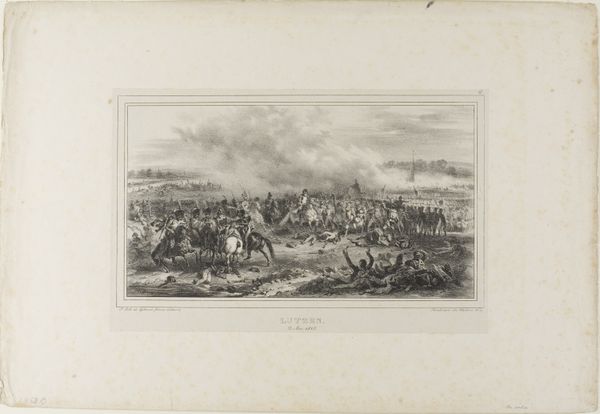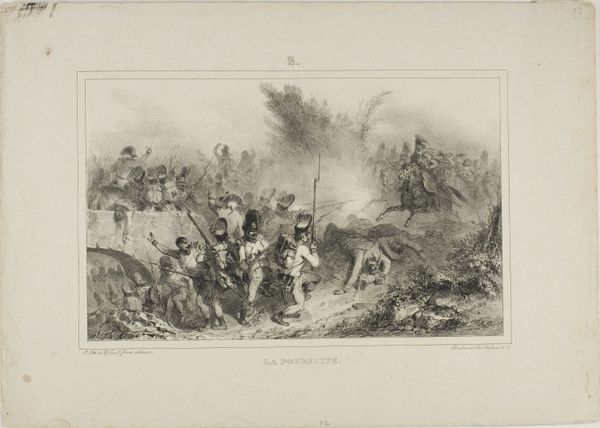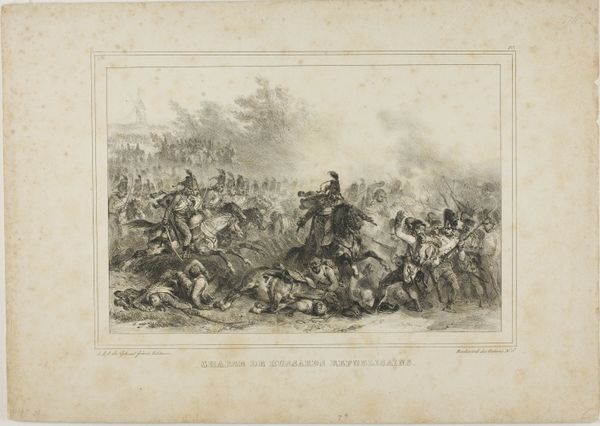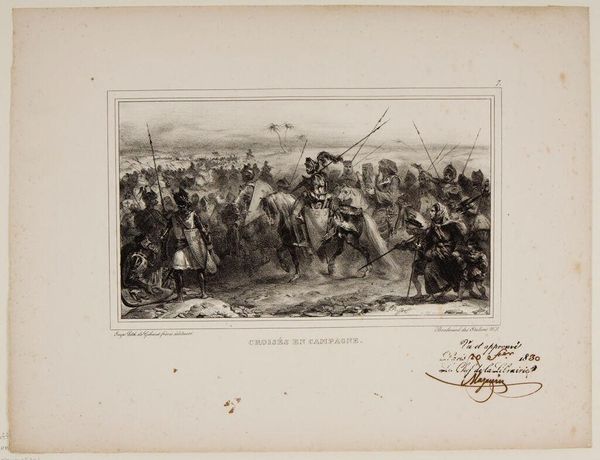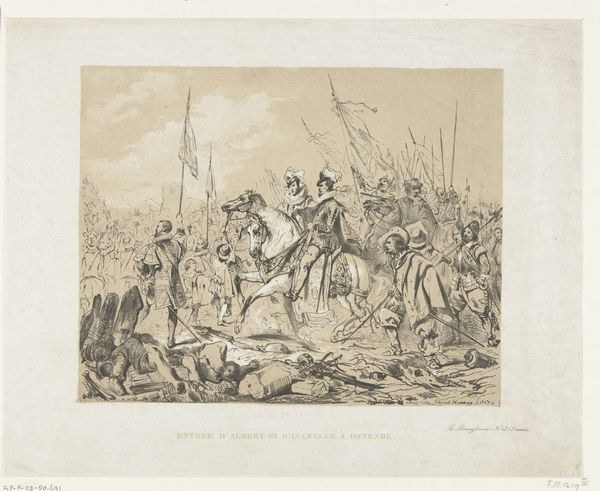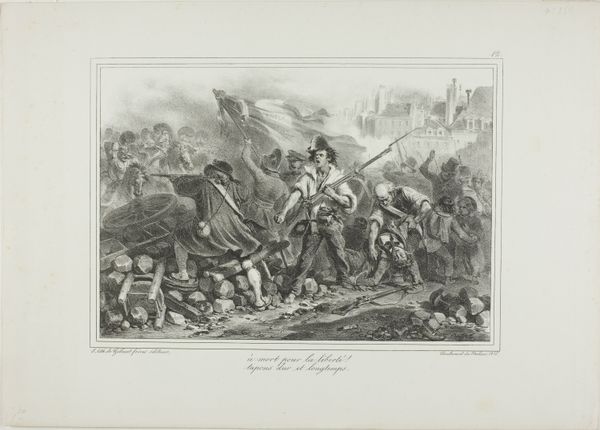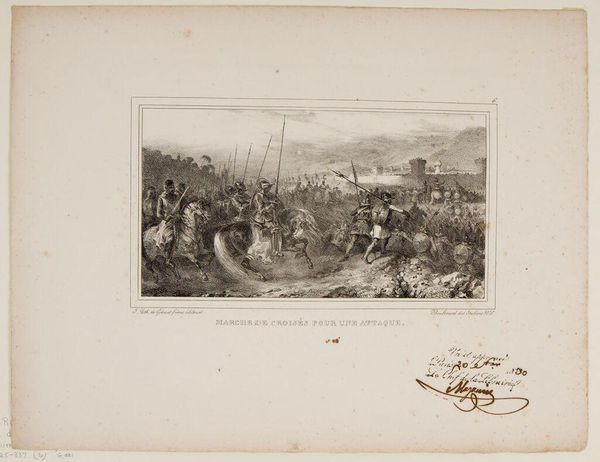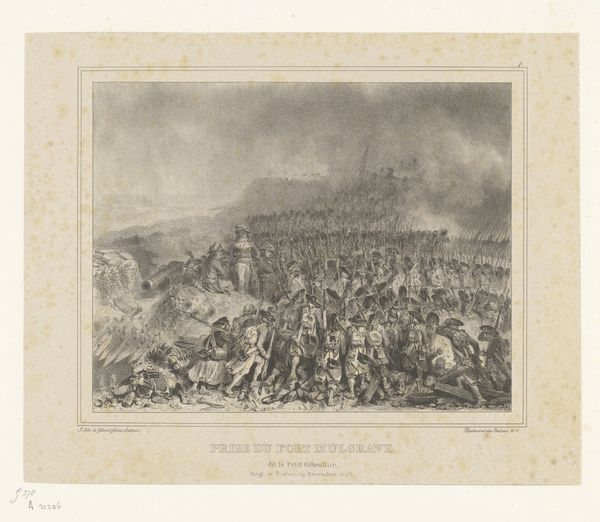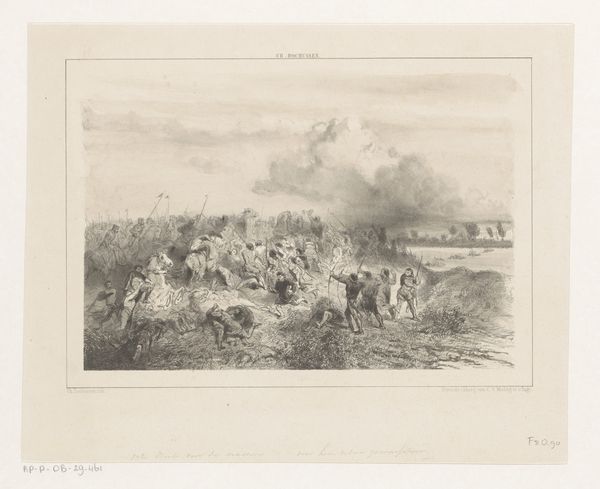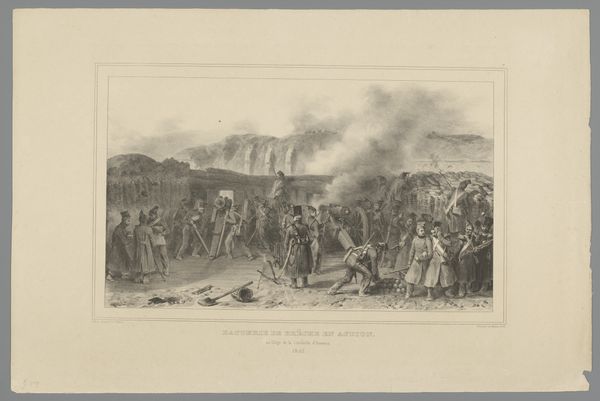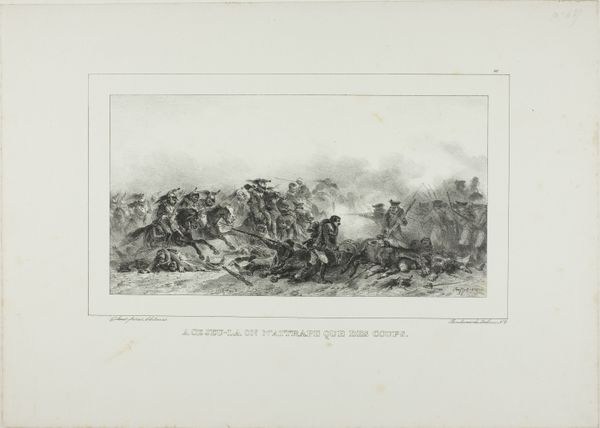
drawing, lithograph, print, paper
#
drawing
#
lithograph
# print
#
paper
#
history-painting
Dimensions: 177 × 266 mm (image, without borders); 285 × 398 mm (sheet)
Copyright: Public Domain
Curator: This lithograph by Auguste Raffet, titled "Provins 1814," was made in 1833 and depicts a tumultuous battle scene. What's your first impression? Editor: My immediate response is of chaotic energy. The swirling composition, densely packed with figures, immediately suggests movement and disruption. There's a real tension in the contrast between the dense foreground and the faded cityscape in the background. Curator: Indeed. Raffet, who often focused on military subjects, here captures the tail end of Napoleon's campaigns in France. Provins, the town depicted, witnessed intense fighting as the allied forces advanced on Paris. Editor: The dynamism is largely achieved, it seems to me, through the clever use of line. The lines are quite variable—dense, thin, short, long—which enhances the chaotic atmosphere. What is he communicating about these moments in history? Curator: Consider that battle scenes served not only as records but as potent cultural narratives, reinforcing ideas of patriotism and sacrifice. The drum in the lower left is more than an incidental detail. In wartime, a drum’s thundering roll serves as a literal and symbolic heartbeat to call soldiers to fight for their country. Raffet is, in effect, invoking those emotions through its imagery, speaking directly to viewers long after the historical events faded away. Editor: A cultural heartbeat rendered with some exceptional technique, I must add. The texture Raffet achieves through lithography—it's fascinating. See how the density of marks suggests depth and dimension, especially amidst the flurry of combat. Even with so few tones, a striking sense of light and shadow. Curator: Raffet masterfully conveys the scale of conflict. This single image echoes across time, evoking sentiments surrounding military actions in an age before photojournalism. The imagery of war continues to be potent in modern life. Editor: I agree, and observing the print closely allows an analysis of its formal strategies which effectively contribute to this lasting impact. Curator: Studying “Provins 1814” grants insight into the strategies and values that imbue even seemingly simple drawings and prints with significant historical, psychological, and social importance. Editor: For me, analyzing how those lines create space, depth, and movement lets me see just how impactful close formal analysis can be.
Comments
No comments
Be the first to comment and join the conversation on the ultimate creative platform.
